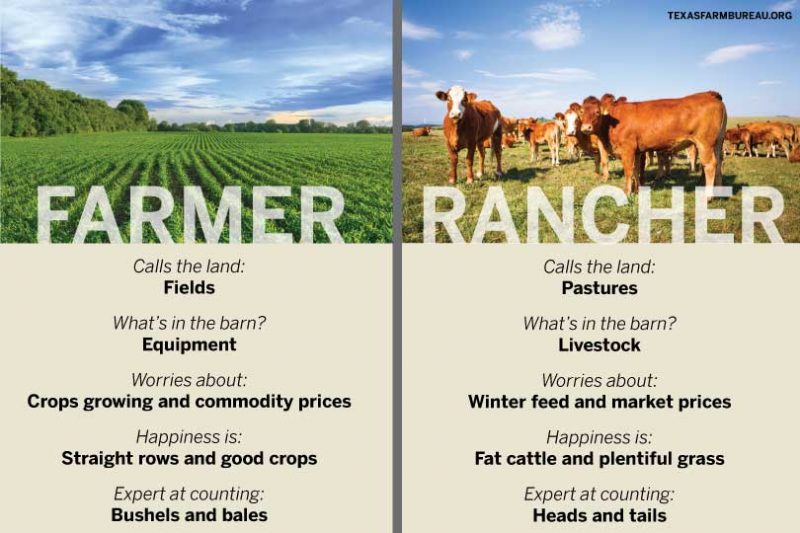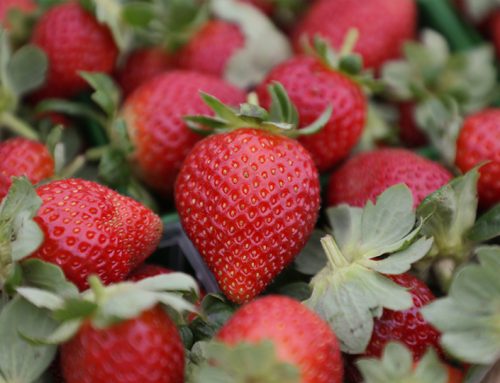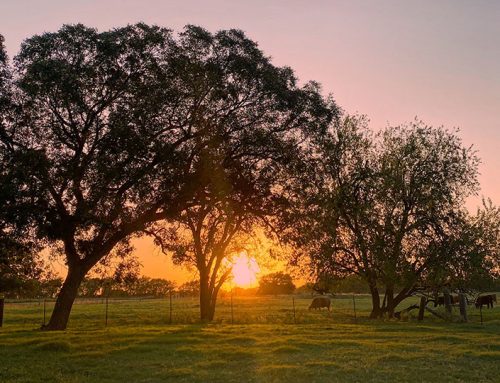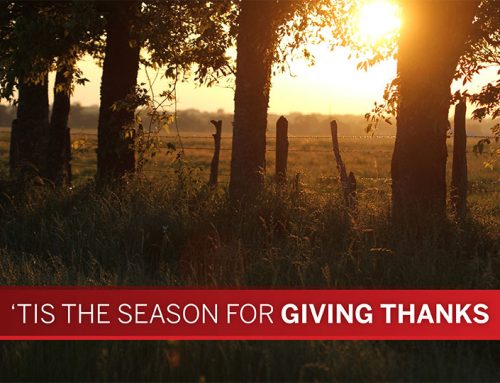By Jennifer Dorsett
Old MacDonald had a farm, E-I-E-I-O. It’s a favorite song among the preschool set, and we all know the words by heart.
But after I thought about it one day, I realized the song was a bit misleading. Old MacDonald had a farm, but was he a farmer or a rancher?
He sure had a lot of animals for a farmer. But perhaps he primarily grew corn, and animal husbandry was a side hobby. Or maybe he grew wheat. We’ll probably never really know.
But one thing we do know is farmers and ranchers are both responsible for growing our food and fiber. They’re equally important. They just use different methods to accomplish the same thing.
What are the key differences?
Farmers grow crops. They plow, plant, spray and harvest. Farmers talk about seed, fertilizer, soil health and tractors.
Ranchers raise livestock. They know livestock breeds, animal husbandry and stocking rates.
A farmer will own tractors, plows, spray rigs and combines. Some have irrigation equipment like pivot sprinklers. These tools of the trade are vital for growing, harvesting and transporting crops.
Ranchers use pickup trucks and stock trailers, UTVs and squeeze chutes. Horses are still used to work cattle. Tractors, feed troughs, windmills and cattle panels round out the gear needed to successfully raise healthy animals for market.
Farmers love the land. They work hard to make sure soil is in optimal condition. From no-till and cover crops to residue management and soil amendments, farmers employ an array of techniques in the quest for soil health.
Ranchers love the land, too. They use land not suitable for farming—it’s too rocky or too dry or muddy, too brushy or too steep. Ranchers fence pastures and rotate grazing to keep land in tip-top shape.
Farmers find beauty in neatly-plowed furrows, lush green plants and fruitful harvests.
Ranchers love wide-open spaces and sleek, healthy cattle. Straight fences and sturdy posts can make a rancher downright giddy.
A farmer’s worst day is an early freeze or when a crop gets hailed out. Sugarcane aphids, boll weevils, grasshoppers and corn earworms are some of the nastiest pests farmers know.
A rancher’s saddest day is losing an animal. Predators, disease, injury and difficult births are major sources of worry for a rancher. Natural disasters such as hurricanes, floods, wildfires and blizzards are tough to endure when the safety of the herd is uncertain. Many ranchers won’t evacuate in the face of danger without making sure their animals are safe first.
Farmers grow food crops like grains, vegetables, fruit and nuts. They also raise fiber such as cotton, Texas’ number-one crop.
Ranchers primarily produce meat. Hides are used to make leather, and sheep and goats can be sheared for their wool and mohair.
So there you have it. Farmers and ranchers use land to produce our food and fiber, but in slightly different ways.
It’s entirely possible Old MacDonald was both a farmer and rancher. Plenty of Texans enjoy raising crops and animals and are good at both.
And at the end of the day, what we know for sure about Old MacDonald: He was a typical American farmer or rancher, willing to work hard to feed and clothe you and me.










Nice article. I love the smell rain. The sound of rain in the tin roof on the house or barn. Love the taste and smell of steak on mesquite fire. Sight of baby calves in tall grass.
You are unwittingly leading mankind to where we should go: RANCHARD. Ranchard = ranch or livestock + Orchard or fruit trees with some veges and crops and flowers.
In short, Paradise!
Thanks for the lovely article.
Is there a link or some way I can get to the recipe book, I saw it once and there was several recipes I liked but can not get back to it.
Thanks, Alice
I always like to say that ranchers wear cowboy hats and cowboy boots. Farmers wear baseball caps and muck boots. You’ll see a rancher on a horse and a farmer on a tractor. Ranchers raise meat animals while farmers raise dairy. Both equally important to our livelihood! Great article!